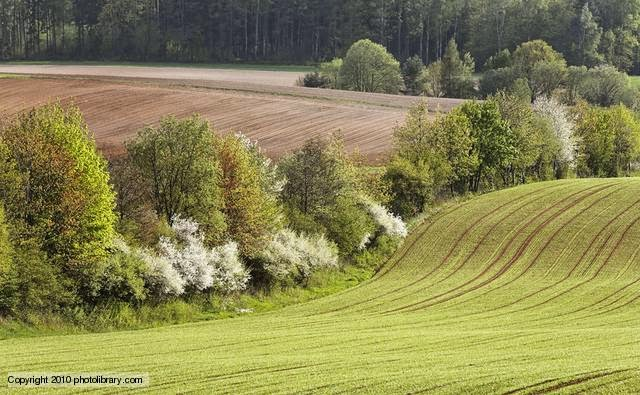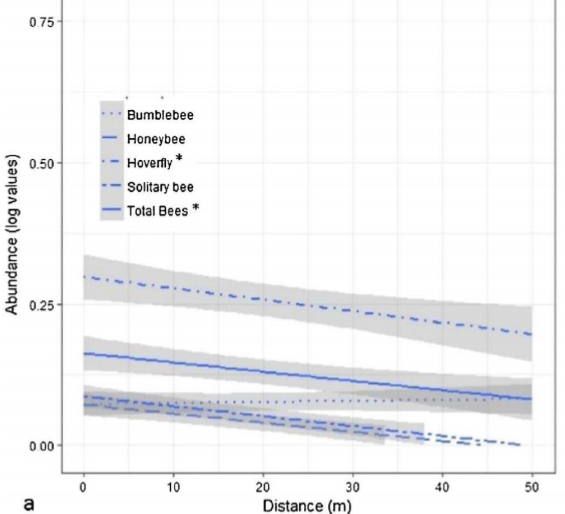You see those hedges running through the field? The ones your sibling pushed you into, on a good old family Sunday afternoon walk? The ones that make the avid walkers curse, as they see their destination through the gap of six feet of vegetation? Debating whether to try and squeeze themselves and their 30 litre Osprey backpack through it or admit defeat and try find the footpath they strayed from. Those towering walls of flora, framing fields of corn and wheat, have shaped the British landscape for hundreds of years and they are some of the most important ecologically biodiverse habitats we have.
You can’t escape them, from lining roads in and out of town, to the partitioning of farmer’s fields, they’re an admired fundamental feature of Britain. But how many of us actually stop to ponder the reason for their existence? It’s easy to go about our own busy lives, in this forever increasing fast paced world, than to think about the world inside the mesh of hawthorn, holly and ivy. It’s strange to think that these hedges, which some of us walk past possibly every day, are home to a remarkably diverse range of species. From ornate Linyphiid and harvesting opilionids spiders, short living aphids and bumble bees, to burrowing rabbits, nesting birds and carnivorous hawks and foxes; they all live out their lives in the hedgerow. Their existence might help in the fight to feed our population.
There are organisations, restoring and creating hedgerows across Britain today, working to preserve these ecosystems. I was privileged enough to partake in the ancient art of hedge laying a week ago. From the angled axing of trees, so they can be rested down horizontally but still attached to the root, allowing them to continue to grow supporting the hedge, to the final threading of binds to hold the whole row together; It’s a task that definitely requires man power and time. This has contributed to the conflict over hedgerows.
To farmers, these congregations of trees and herbaceous plants, booming with wildlife, are a liability. Due to the time and money consuming process of maintaining a hedgerow and the space they take up. A popular approach by farmers, in order to combat the wall of vegetation, is to tear it down all together and replace it with a simple wooden fence. In the eyes of an economically efficient farmer, a fence requires little maintenance, they do not home potential pests and weeds, no crop is at risk of being overshadowed, and ultimately provide more space to tolerate our high demand for food. The last being the most significant argument.
With a rapidly growing population, now more than ever there is an urgent need in finding a solution of how to cope with the growing number of mouths to feed. Therefore, smaller workforces, larger masses of arable land with complex machinery to work it, have believed to become the way forward. The larger the field, the more efficient the turnaround of tractors, the faster they can harvest, the more food is produced.
So why are hedgerows important?

Hedgerows are vital in the prevention of soil degradation of arable land, of which affects half the world’s farmland. Soil degradation is a result of the removal of features such as hedgerows, leaving land vulnerable to over farming, using heavy machinery constantly and allowing overgrazing of livestock. However, the soil associated with hedgerows is less compact, allowing more water storage around the hedgerow. This means, especially in winter months, flood risk is decreased and thus so is the damaging of crops, leading to a sustainable production of food.
Furthermore, recent research funded by the European Community’s Seventh Framework Programme, has provided factual evidence of the importance of the presence of the almighty hedgerow. As mentioned previously, it is home to a dynamic range of species, making it a truly heterogenetic environment. Hedgerows support an abundance of ‘natural enemies’, the term given to the organisms that attack and feed on others, including pests. It’s argued that hedgerows are where pests, that feed on farmer’s crops, thrive. However, it’s proven they support the predators that keep pests at bay. Spider species: Lycosids, Linyphiid and Staphylinids, are the heroes of the hedge, who feed on crop pests (such as aphids), the bane of any agricultural farmer. The spider’s carnivorous behaviour is known as ‘intraguild interference’ and is a common trait of these invertebrates living out their lives on the farm. However, spiders and other species dependent on the hedgerow, are restricted to the standard at which the hedge is kept.
The pollinators- the bees and the butterflies- are the organisms that inhabit the hedge and provide fundamental ecological services that benefit us humans greatly. Crops rely heavily on pollinators for reproduction, to increase fruit and seed creation in quality and quantity. In fact, studies show that 39 of the 57 major crops worldwide depend on these hard workers. Therefore, with a decline in pollinators, the production of agriculture will fall by 8%. Only by turning more area into farm land, will we compensate for the loss of our bee’s. This would result in further destruction of ‘natural’ and human influenced ‘semi-natural’ habitats, such as hedgerows, creating a viscous cycle which would ultimately contribute to climate change.
When addressing pollinators, it can be easy to forget that this name covers a range of species, not just the humble bumble bee. Overall around 430 bumble, honey and solitary bees were observed during the research, along with 276 hoverflies. Both the bee and hoverfly have vital ‘spillover effects’. This means on their migration from the hedge to the crop field, they bring their pollinating talents with them.

As we can see from the chart, the number of species declines the further we move from the hedgerow. This is evidence that the hedgerow is the source of the pollinators. Despite the decline, it is still clear that the species spillover up to 50 metres into the crop field. A considerable amount of land is covered, most consistently by the reliant bumblebee.
But what attracts all these species to the hedgerow?
During the research, hoverfly visits were recorded, which showed 80% travelling to the flowers of the understorey (the vegetation protruding from the floor below the hedge) over the flowers located throughout the hedge. This shows the understorey to be a vital foraging source and an important feature of a successful hedgerow. Whereas, Lycosids and Staphylinids prefer a hedgerow rich with tree species, which can be achieved by planting hawthorn, hazel and blackthorn as a basis to develop a diverse hedgerow. Therefore, the type of vegetation, tree and structure of a hedgerow can manipulate how effective it is in supporting pest controllers and pollinators. Countryside management schemes can now use this study to their advantage, by targeting to attract these invertebrate, to overall benefit the farmer with a higher yield.
Bumblebees were found, near good quality hedgerows, with twice as many there than at ones deemed as poor quality. Good quality hedgerows were described as ones with a minimum of three woody species and gaps no greater than 2m. Poor quality hedges were classed as seen to have has little maintenance, with fluctuating height and width, along with gaps greater than 2m. Linyphiid spiders were also found in greater numbers where the hedgerow appeared unbroken.
Therefore, the more well-maintained hedgerow the more the wildlife, farmer and thus the rest of us, benefit. It’s a win win situation. The research showed that the more diversity of natural enemies and pollinators the hedgerow supports, the more efficient the pest control which ‘is likely to strengthen the contribution of both services to production and yield stability’.
So next time you find yourself wondering aimlessly through the British countryside, failing to see a public footpath sign for the past two hours, those gaps may look very tempting, but try and resist. The hedgerow is the home of our little friends who are working hard to support the future of sustainable farming and feeding our growing population.
If you would like to get involved with the organisations working to conserve and create hedgerows, contact your like natural or wildlife trusts. You’ll meet like minded people trying to do their bit to save the planet. The first step is just getting out there and doing it.
References:
Dowdswell, W. H. (1987) ‘Hedgerows and verges’. Allen & Unwin Ltd, Pages: 120-131
Fisher, A. (2013), ‘Just what is a hedgerow? A few notes on history, form and function.’ Picture originally published by Ecological Gardening. Available at: https://www.resilience.org/stories/2015-02-03/just-what-is-a-hedgerow-a-few-notes-on-history-form-and-function/, Accessed on: 31/1/19
Garratt, M. P. D. (2017) ‘The benefits of hedgerows for pollinators and natural enemies depends on hedge quality and landscape context,’ Agriculture, Ecosystems & Environment, volume 247, pages 363-370
Holdena, J;⁎ , Grayson, R.P (2019), ‘The role of hedgerows in soil functioning within agricultural landscapes’ Agriculture, Ecosystems and Environment, vol. 273, pages 1-12, Available at: journal homepage: http://www.elsevier.com/locate/agee
Marcelo A. Aizen Lucas A. Garibaldi Saul A. Cunningham Alexandra M. Klein (2009), ‘How much does agriculture depend on pollinators? Lessons from long-term trends in crop production,’ Annals of Botany, Volume 103, Issue 9, 1 June 2009, Pages 1579–1588, Available at: https://doi-org.ergo.southwales.ac.uk/10.1093/aob/mcp076
Land, A (2003). ‘Intraguild Interference and Biocontrol Effects of Generalist Predators in a Winter Wheat Field,’ Oecologia, vol.134, No.1, pp. 1 abstract, Springer in cooperation with International Association for Ecology. Available at: https://www.jstor.org/stable/4223485
Russ, G., & Alcala, A. (2010). Enhanced biodiversity beyond marine reserve boundaries: the cup spilleth-over Ecological Applications, available at: https://conservationbytes.com/2010/04/18/the-spillover-effect/, Accessed on: 25/1/2019